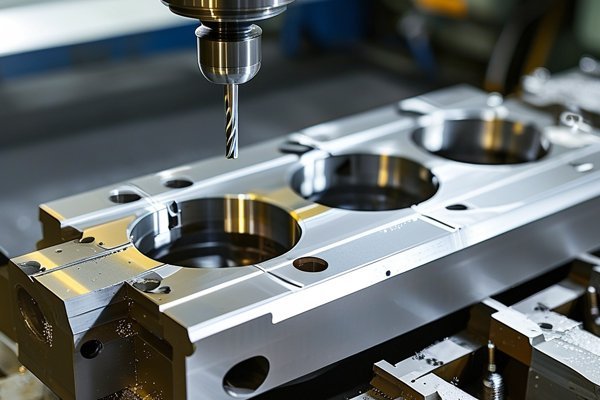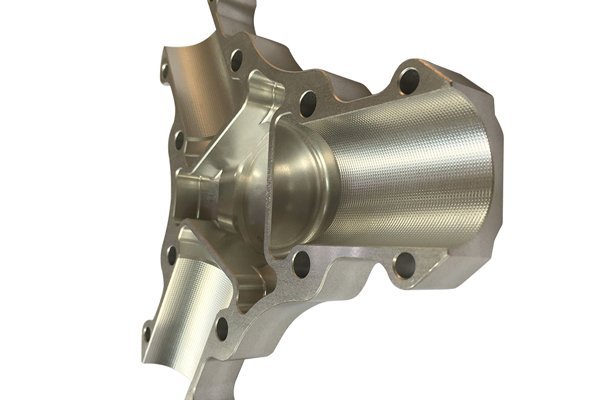Did you know that manufacturing waste accounts for nearly 20% of all materials processed in the machining industry? That staggering figure emphasizes the urgency for manufacturers to examine their practices and make significant improvements. With the increasing focus on sustainability, resource optimization, and cost-effectiveness, understanding how to reduce material waste in CNC machining is not just imperative; it’s a pathway to enhanced profitability and environmental stewardship.
CNC (Computer Numerical Control) machining has revolutionized the manufacturing landscape by providing precision and efficiency. However, this technological prowess can ironically lead to substantial waste if not managed properly. The unique combination of high material costs, potential production delays, and environmental impact necessitates a closer look at processes involved in CNC machining.
This blog aims to equip you with insights, techniques, and innovative approaches to reduce material waste in CNC machining while optimizing costs. Whether you’re a CNC machinist, an operations manager, or a manufacturing entrepreneur, the strategies discussed will lead you toward more efficient resource management and enhanced profitability.
Understanding CNC Machining Waste
Types of Waste in CNC Machining
When discussing waste in CNC machining, it’s essential to identify the types of waste that can occur. Understanding these categories can help in devising strategies to minimize them.
Economic and Environmental Impacts
The implications of material waste extend beyond just higher costs. Reduced material efficiency can lead to:
Strategies for Reducing Material Waste
Now that we’ve explored the types and implications of waste in CNC machining, let’s delve into effective strategies for minimizing these inefficiencies.
The design phase is crucial to reducing CNC machining waste. By implementing Design for Manufacturing (DFM) principles, engineers can create parts that are easier to machine, minimizing waste.
Tooling plays a critical role in CNC machining efficiency. Selecting appropriate tools can minimize material wear and overall waste.
Setup times can significantly affect the material waste in CNC machining. Long setups lead to higher material costs and less productive time.

Leverage Lean manufacturing techniques to eliminate waste in all areas, including material use, time, and resource allocation.
The emergence of new technologies can lead to substantial reductions in CNC machining waste.
To effectively manage waste reduction, manufacturers need a strategy for continuous monitoring and improvement.
Ultimately, the success of waste reduction strategies depends on the people implementing them. Comprehensive training programs are essential.
Case Studies and Real-World Applications
To enhance your understanding of these strategies, let’s explore some real-world examples demonstrating successful waste reduction in CNC machining.
Case Study 1: Aerospace Components Manufacturer
An aerospace manufacturer faced persistent issues with high material waste during machining. By adopting a robust DFM approach, they realigned their designs for manufacturing capabilities. They utilized CAD software simulations and made informed decisions on modular tool selection.
Results: Material waste decreased by 30%, translating to significant cost savings and improved production timelines.
Case Study 2: Automotive Parts Supplier
An automotive supplier adopted Lean manufacturing principles by integrating 5S into their production. By restructuring workspaces and standardizing operational processes, they reduced setup times, leading to efficient machining runs.
Results: The company reported a reduction of waste by 40% and improved delivery timelines, enhancing customer satisfaction.
Case Study 3: Medical Device Manufacturer
To address issues related to high scrap rates, a medical device company implemented data analytics in their CNC machining processes. This insight led to adjustments in tool management and the fine-tuning of cutting parameters.
Results: Scrap material reduced by 50%, and the implementation of regular data reviews fostered a culture of continuous improvement.
Reducing material waste in CNC machining while optimizing costs isn’t just a goal; it’s an essential practice for any manufacturing business that wishes to maintain competitiveness. By employing strategies such as DFM, effective tooling management, Lean principles, and advanced technology, manufacturers can significantly decrease waste and enhance efficiency.
In summary, the journey toward waste reduction involves understanding the types of waste, their economic and environmental impacts, and actively implementing structured solutions. The techniques discussed not only minimize waste but also foster a culture of continuous improvement, benefiting the bottom line and the environment.
As you reflect on the insights shared in this blog, consider taking a proactive approach. By focusing on waste reduction, not only do you contribute to a sustainable future, but you also position your manufacturing operation for long-term growth and success. Small, consistent changes can lead to substantial benefits, making it a worthy pursuit for every CNC machining operation.






